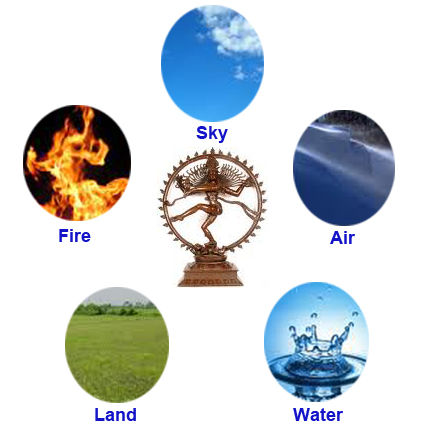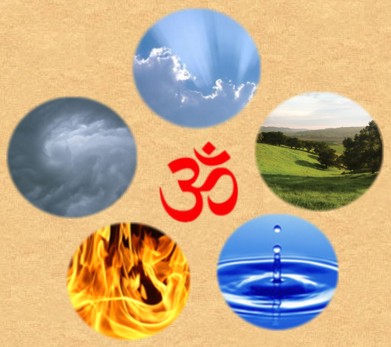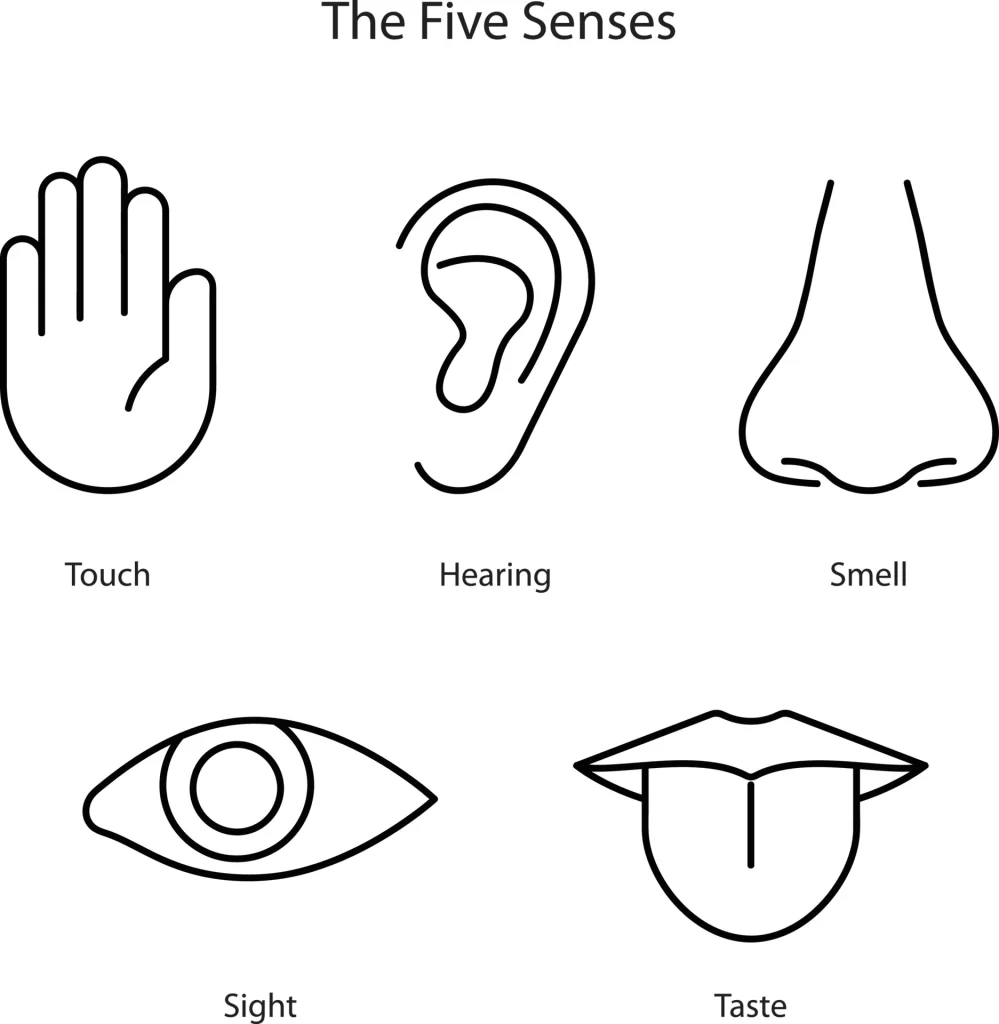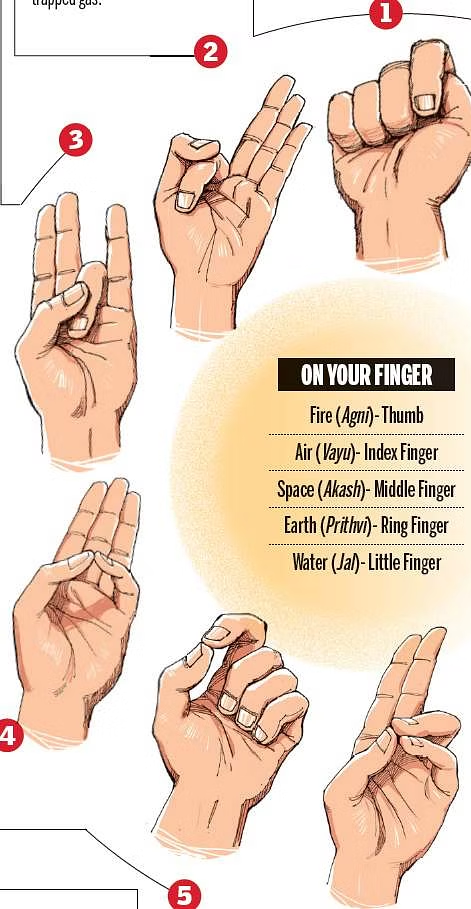What is Bhuta Shuddhi? Exploring the Meaning, Benefits, and Tips to Purify the Five Elements.
Bhuta Shuddhi is a practice in yogic philosophy that involves the purification of the five elements (bhutas) that make up the human body: earth, water, fire, air, and ether, in Sanskrit it is named as “Khiti” for Earth,” Apa” for Water, “Tej” for fire, “Marut” for Air and “Byom” for Ether. The aim of Bhuta Shuddhi is to balance and harmonize these elements within the body and to create a more refined and receptive state of being.
Table of Contents
Why Do the Five Elements Need Cleansing?
The concept of the five elements is rooted in ancient Hindu culture and spiritual traditions, including Hatha Yoga, Tantra Yoga, Ayurveda, and Upanishads also. These elements – earth, water, fire, air, and ether or space – are believed to be the building blocks of the universe, and are present in every aspect of our lives, including our bodies, minds, and environment.

Neglecting This Process Can Lead To…
The process of cleansing the elements involves freeing them from the accumulated karmic substance or information. Neglecting this process can lead to setting up self-imposed boundaries that limit our ability to expand beyond our current state.
Living within these limitations is unwise and prevents us from realizing our true potential. We falsely claim that this is who we are, when in reality, it is who we have made ourselves to be.
Bhuta Shuddhi addresses this issue at the most fundamental level by cleansing the elements of our being and releasing the accumulated karmic substance. By doing so, we can break free from our limitations, respond differently to situations and realize our true potential.
The Purity of An Element Depends On
The purity of an element depends on its suitability for a particular purpose. For instance, the water from a gutter may not be suitable for human consumption, but it may be rich in nutrients that are beneficial for other forms of life like microbes or plant life.
Conversely, the water we drink from a bottle may be considered pure for human consumption, but it may lack the nutrients and vitality found in natural sources.
Contexts of Bhuta Shuddhi on Types of Practice
Purification of the elements is therefore contextual and dependent on the intended use. In the case of human consumption, purification is necessary to ensure that the elements are conducive to our well-being. Our intention, emotion, and thought processes can influence the quality of the elements, such as the water, air, and food that we consume.
To put it simply, the purification of elements is aimed at creating an environment that is conducive for human well-being. It is not a judgment on the purity of the elements themselves, but rather a recognition of their suitability for a particular purpose.
Cleansing the elements is a way to restore balance and harmony to our lives. This can be done through a variety of practices, such as smudging with sage or other herbs, taking a salt bath, practicing yoga or other forms of movement, and meditating.
What is “Pancha Bhuta” or Five Elements in Sanatana Hindu Tradition?
Pancha Bhuta, also known as the five great elements, is a concept deeply rooted in Hindu philosophy. The five elements are Earth (Prithvi), Water (Jal), Fire (Agni), Air (Vayu), and Ether or Space (Byom or Akasha). These elements are believed to be the building blocks of the universe and everything that exists, including human beings.

Insights of Pancha Bhuta
According to Hinduism, the five elements are not just physical substances but also represent a deeper meaning. Earth represents the solid, stable, and dense aspect of matter. Water represents the fluid, cohesive, and shape-shifting aspect of matter. Fire represents energy, transformation, and change. Air represents movement, communication, and expansion. Ether represents space, openness, and unending potentiality.
Applications of Pancha Bhuta
The concept of Pancha Bhuta has many applications in Hindu rituals, philosophy, and in our daily life. For example, Ayurveda, a traditional Indian system of medicine, uses the five elements to understand the balance and imbalance of the body, mind, and spirit. Each element is associated with specific qualities and characteristics, and an imbalance in any of these elements can lead to physical or emotional ailments.
Deities Related to Pancha Bhuta
In Hindu mythology, the five elements are often associated with different deities. For instance, Earth is associated with the goddess Prithvi, Water with Varuna, Fire with Agni, Air with Vayu, and Ether with Byomkesh or Shiva. These deities are considered to be manifestations of the five elements and are worshipped for their power and influence.
The concept of Pancha Bhuta highlights the interconnectedness of all things and the importance of maintaining balance and harmony in our lives. By understanding the qualities and characteristics of each element, we can cultivate a deeper awareness of ourselves and our environment, leading to greater peace, happiness, and fulfillment.
How Five Elements and Our Karma Is Related?
According to the philosophy of Kathopnishad, our thoughts, emotions, and actions leave an imprint on the five elements, which in turn affects our Karma. Karma is the law of cause and effect, which states that every action we take creates an equal and opposite reaction in the universe, influencing our present and future.

A Simple Example
For example, when we harm someone, we create a negative karmic imprint on the elements, which in turn creates negative consequences for us in the future. Similarly, when we perform acts of kindness and compassion, we create positive karmic imprints on the elements, which result in positive consequences for us in the future.
Yogic System and Karma
In the Yogic system, the focus is on cleansing the body and purifying the elements, which is believed to remove the negative karmic imprints and samskaras (impressions) that are responsible for our suffering and limitations. By purifying the elements and releasing the negative karmic imprints, we can break free from the cycle of Karma and attain liberation or enlightenment.
What Is the Arrangement of Pancha Bhuta or the Five Elements Within the Human Body?
The human body, as well as the world and the universe, are all composed of five elements. These elements are integral to everything around us. Except “Byom” or Space, Of the remaining four elements, water makes up seventy-two percent of the body, with earth comprising twelve percent, air six percent, and fire four percent.
Many times, the Gurus, Munis, Rishis mentions those who simply want to live well, four elements are sufficient. The water element in the body is in sync with the planet, which is around seventy-two percent water. This synchronicity is a result of the evolution of life on Earth.
Ensuring the water within your body is pure and healthy can make up seventy-two percent of your wellness. Incorporating twelve percent earth element and maintaining air levels at six percent can increase wellness to eighty-four and ninety percent, respectively. However, purifying the fire element requires more effort.
What Is the Relation Between Pancha Bhuta and Panchendriya?
Pancha bhuta and Panchendriya are both concepts from Hindu philosophy and are very much interrelated.

Pancha bhuta, which means “five elements,” refers to the five fundamental elements that make up the physical universe. These elements are earth (prithvi), water (apas), fire (tejas), air (vayu), and space (akasha). According to Hindu philosophy, everything in the universe is made up of these five elements.
Panchendriya, which means “five senses,” refers to the five senses of perception that humans possess. These senses are sight (chakshu), hearing (shravana), touch (sparsha), taste (rasana), and smell (ghrana).
The relationship between pancha bhuta and panchendriya is that the five elements make up the physical body, which is the instrument through which the five senses perceive the world. The physical body is composed of the five elements, and the senses depend on these elements to function. For example, the sense of touch relies on the element of earth, while the sense of hearing relies on the element of air.
In Hindu philosophy, the ultimate goal of human life is to achieve self-realization and liberation from the cycle of birth and death. This is accomplished through the purification and control of both the physical body (composed of the five elements) and the senses (which depend on the elements). By doing so, one can attain a higher level of consciousness and ultimately realize the oneness of all things.
How Mudras are Related to Pancha Bhuta?
Mudras are hand gestures that are commonly used in Hindu and Buddhist spiritual practices. They are believed to have various physical, psychological, and spiritual benefits.
In Hindu philosophy, mudras are often associated with the five elements of pancha bhuta. Each finger is associated with a particular element, and when the fingers are placed in a specific mudra, it is believed to activate the corresponding element and channel its energy.

For example, the “prithvi mudra” or “earth mudra” is created by touching the tip of the ring finger to the tip of the thumb while keeping the other three fingers extended. This mudra is believed to activate the element of earth (prithvi) and can have a grounding and stabilizing effect on the body and mind.
Similarly, the “varun mudra” or “water mudra” is created by touching the tip of the little finger to the tip of the thumb while keeping the other three fingers extended. This mudra is believed to activate the element of water (apas) and can have a hydrating and cooling effect on the body.
Other mudras, such as the “agni mudra” (fire mudra), “vayu mudra” (air mudra), and “akash mudra” (space mudra), are also associated with the other elements of pancha bhuta and are believed to have various physical and spiritual benefits.
In short mudras are hand gestures that are believed to activate and channel the energies of the five elements of pancha bhuta. Each mudra is associated with a specific element, and when performed correctly, it is believed to have physical, psychological, and spiritual benefits.
Conclusion
Cleansing the elements becomes significant when we seek freedom and liberation in our lives and aspire to break free from self-imposed limitations. When we concretize our karmic processes, we become rigid and suffer from its consequences. We do not need external calamities to occur, as we ourselves become a calamity due to the depth of our karmic imprints. We react in predetermined and compulsive ways to the same situations repeatedly, requiring a considerable amount of awareness and shaking up to respond differently.
References
https://yoga.ayush.gov.in/Yoga-History/
https://www.ncbi.nlm.nih.gov/pmc/articles/PMC5871312/
https://traditionalyogastudies.com/wp-content/uploads/2022/01/Kundalini-by-Georg.pdf
http://www.mantravijaya.com/uploads/1/0/9/0/10908678/stages_of_inner_experience_in_vedic_ceremony.pdf
